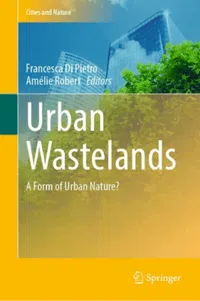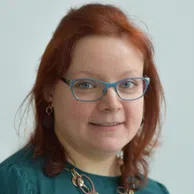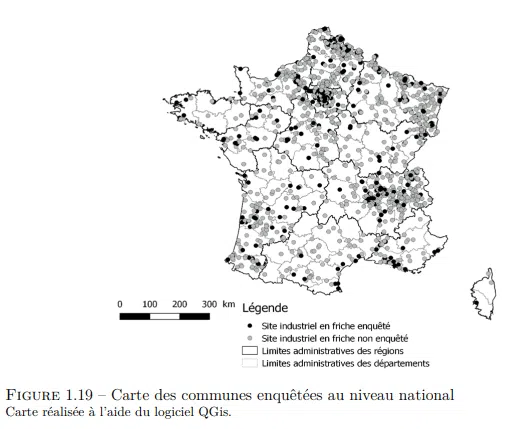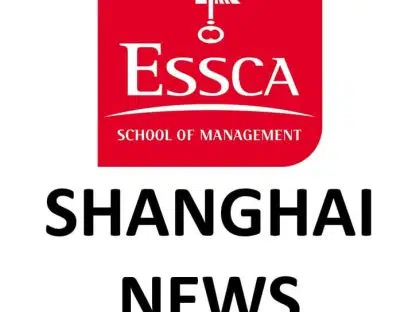The study ‘Let it Grow? Social Representations of Nature on Contaminated Brownfields’ by Marjorie Tendero and Dr Cécile Bazart has just been published in ‘Urban Wastelands’ in the series ‘Cities and Nature’ by Springer.
What does this chapter contain, what are the results of the study, and how was this research carried out? Thank you, Dr Marjorie Tendero, to have taken the time to answer these questions.
Can you give us a short preview of this work; its origins, its progress and the findings of this study?
This study deals with the nature we find in polluted urban wastelands, which are areas left abandoned following the end of economic activity. These areas are found in urban zones, where the soil pollution from past activities is recognised. The study looks at how these areas and their vegetation are perceived; does the local population also see benefits in terms of biodiversity and public wellbeing in these areas? The theme of this research goes back to my Ph.D. carried out between 2014 and 2017 within the framework of research funding by ADEME at Agrocampus Ouest. ADEME carried out a call for tender for research concerning polluted wastelands and the assessment of their reconversion. For me, this subject was, and still is, an important subject, and one that I am still working on. This study is, therefore, a continuation of my research. In this particular piece of work, I wanted to analyse the perception people have of a polluted wasteland, in other words, do people see these areas as natural, or just polluted land? In order to do this, I carried out new analyses of the corpus collected during my thesis, underlining the importance of vegetation and nature.
In 2013, the year of my Ph.D., there were 6,500 polluted or potentially polluted wasteland sites requiring public action. About one third of these were polluted industrial wastelands.
I was able to ‘test’ and develop my research on polluted industrial wastelands thanks to conferences and colloquia where I was able to meet experts and other researchers. The feedback from questions and research advice has led to continually enriching our proposals. I have been quite active in Tours, where the Citeres laboratory carries out excellent work on landscaping and urbanisation, particularly for wastelands. My participation in this book is the result of my presence at a colloquium ‘Urban wastelands: a form of urban nature?’, which took place in May 2019 in Tours.
And what is the result of your research?
Even though an area is polluted, people see it as nature. On the other hand, the judgement they provide varies: some see these areas in a negative way, whereas others see them in a positive way. Therefore, an unmanaged area of vegetation can be seen as un-aesthetic (the expression ‘ugly’ was used several times in the analysed corpus), but also as an important area for biodiversity.
The act of converting a wasteland into a useful area (e.g. housing, park etc.) does not necessarily change people’s perception of that area. For example, a polluted wasteland that has been cleaned up and then renovated can remain stigmatised due to its past pollution. This can also be seen in terms of land value. This is the case for people, organisations and local authorities. It often needs 10, 20 or 30 years for the perception of a site to change.
This study was based on 803 individual observations – via questionnaires – by people living in a French municipality with an industrial wasteland (a total of 503 different municipalities). Could you give a few examples?
Yes, of course. Since we are in the Maine-et-Loire, let’s take 3 local examples. The Alleud factory wasteland at La Poissonière; the Thomson wasteland in Angers, and the Tarares wasteland in Mauge-sur-Loire. It is, by the way, very interesting, to see how the local authorities and the inhabitants of these areas used the results of my research. For example, in Mauges-sur-Loire, I think that the transformation into green areas with solar panels and pasture worked out pretty well, even though it started with considerable problems related to the considerable sums of money involved.
Who is this study for, and who should read the chapter you wrote?
This study is destined, above all, to all those who manage the landscape and for all local authorities confronted with the problems of polluted wastelands. The local people might also be interested.
However, this book has only been published in English. This is a bit restrictive, isn’t it? How can the people you have mentioned have better access? Are there translations in French, or has this been foreseen?
Yes, our objective is to disseminate this study. This might be via articles in the press, via interviews, and also via public partners. I’m thinking in particular of ADEME, that organises an annual colloquium on the reconversion of wastelands to help those concerned in the planning and realisation of their landscape projects, of development projects and the renewal of degraded areas.
In what way is ESSCA, School of Management, concerned with this research?
At ESSCA, the subject of sustainable development is at the heart of all its research areas and is also one of the areas of expertise of the Europe Asia Institute, of which I am a member. My study is clearly within the area of the environment, governance and sociological impact. What’s more, wastelands are a source of considerable cost for society in their maintenance as well as in their reconversion. There is, therefore, also an economic factor in this study that leaves scope for further research.
Exactly, so what is foreseen?
There are still many things I would like to exploit from my thesis. At the moment I am working on two articles:
- One concerns people’s satisfaction with the management of polluted soils.
- The other deals with their understanding and representations of polluted soils.
I have also extracted data that mostly concerns the management of wastelands with the intention of working on the difficulties encountered with the transformation of wastelands. The cost is a handicap, but other factors play an important role such as administrative constraints that can be considerable.”
Thank you, Marjorie, for this interview, and hoping to see you again soon to talk about new research and studies.

Dr Marjorie Tendero is an assistant professor at ESSCA and a member of the EU*Asia Institute. Dr Cécile Bazart is a lecturer at the University of Montpellier, CEE-M, Montpellier and co-supervisor of Marjorie Tendero's thesis.






